The Universal Prismatic Microscope
Consisting of 5,682 parts and able to achieve resolutions of up to
100,000 diameters.
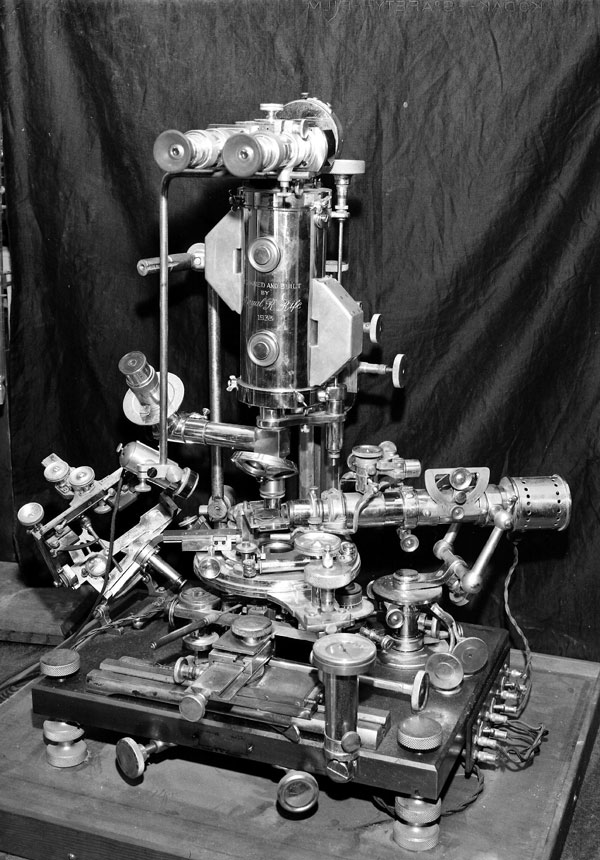
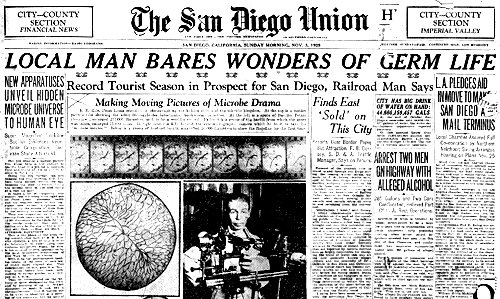
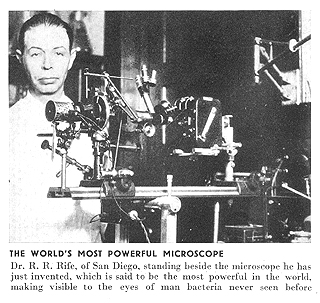 Some
of Royal Rife's inventions include a heterodyning ultraviolet
microscope, a micro-dissector, and a micromanipulator. When
you thoroughly understand Rife's achievements, you may well decide
that he has one of the most gifted, versatile, scientific minds in
human history.
Some
of Royal Rife's inventions include a heterodyning ultraviolet
microscope, a micro-dissector, and a micromanipulator. When
you thoroughly understand Rife's achievements, you may well decide
that he has one of the most gifted, versatile, scientific minds in
human history.
By 1920, Royal Rife
had finished building the world's first
virus microscope. By 1933, he had perfected that
technology and had constructed the incredibly complex Universal
Microscope, which had nearly 6,000 different parts and was capable
of magnifying objects
60,000 times their normal size! With this
incredible microscope, Rife became the first
human to actually see a live virus, and until quite recently,
the Universal Microscope was the only one which was able view live
viruses.
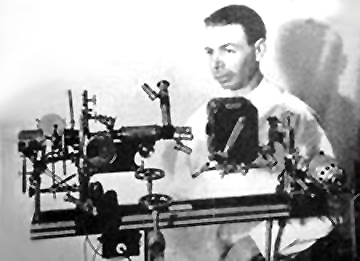 |
Royal Rife
Standing next to his No.1 Prismatic-Virus Microscope,
Showing Camera, for Still and Motion Micrography.
|
|
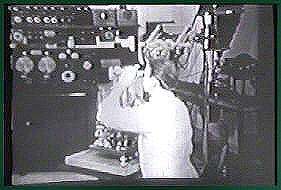 |
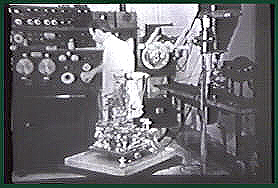 |
|
Dr. Royal Rife
identifying and studying an organism on the Universal #3
Microscope. |
Dr. Royal Rife killing or
disabling the organism with his beam ray frequency device.
The large phanotron plasma tube is above the Universal #3
Microscope. |
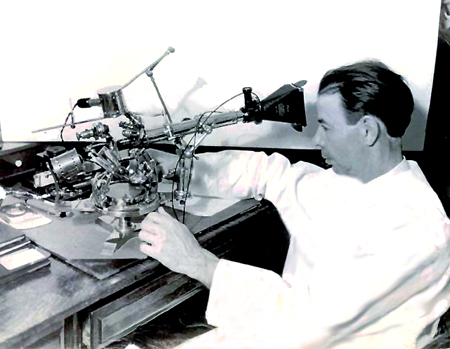 Modern
electron microscopes instantly kill everything beneath them, viewing
only the mummified remains and debris. What the Rife microscope can
see is the bustling activity of
living viruses as
they change form to
accommodate changes in environment, replicate rapidly in response to
carcinogens, and transform normal cells into tumor cells.
Modern
electron microscopes instantly kill everything beneath them, viewing
only the mummified remains and debris. What the Rife microscope can
see is the bustling activity of
living viruses as
they change form to
accommodate changes in environment, replicate rapidly in response to
carcinogens, and transform normal cells into tumor cells.
But how was Rife
able to accomplish this, in an age when electronics and medicine
were still just evolving? Here are a few technical details to
placate the skeptics...
Rife painstakingly
identified the individual spectroscopic signature of each microbe,
using a slit spectroscope attachment. Then, he slowly rotated block
quartz prisms to focus light of a single wavelength upon the
microorganism he was examining. This wavelength was selected
because it resonated with the spectroscopic signature frequency of
the microbe based on the now-established fact that
every molecule oscillates at its own distinct frequency.
The atoms
that come together to form a molecule are held together in that
molecular configuration with a covalent energy bond which both emits
and absorbs its own specific electromagnetic frequency. No two
species of molecule have the same electromagnetic oscillations or
energetic signature. (This
allows frequencies to be directed at just the
exact virus, bacteria, etc... attacking the
body,
without harming any other tissue or organisms.)
Resonance amplifies light in the same way two ocean waves intensify
each other when they merge together.
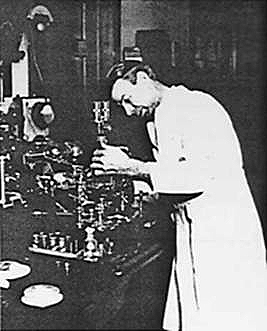
The result of using a
resonant wavelength is that micro-organisms which are invisible in
white light, suddenly become visible in a brilliant flash of light
when they are exposed to the color frequency that resonates with
their own distinct spectroscopic signature. Royal Rife was thus able
to see these otherwise invisible organisms
and watch them actively invading tissues cultures.
Royal Rife's discovery enabled him to view organisms that no one
else could see with ordinary microscopes.
More than 75% of the
organisms Rife could see with his Universal Microscope are only
visible with ultra-violet light. But ultraviolet light is outside
the range of human vision, it is 'invisible' to us. Royal Rife's
brilliance allowed him to overcome this limitation by heterodyning,
a technique which became popular in early radio broadcasting.
He illuminated the microbe (usually a virus or bacteria) with two
different wavelengths of the same ultraviolet light frequency which
resonated with the spectral signature of the microbe. These
two wavelengths produced interference where they merged. This
interference was, in effect, a third, longer wave which fell into
the visible portion of the electromagnetic spectrum. This was
how Dr. Rife made invisible microbes visible without killing them,
a feat which today's electron microscopes still cannot
duplicate.